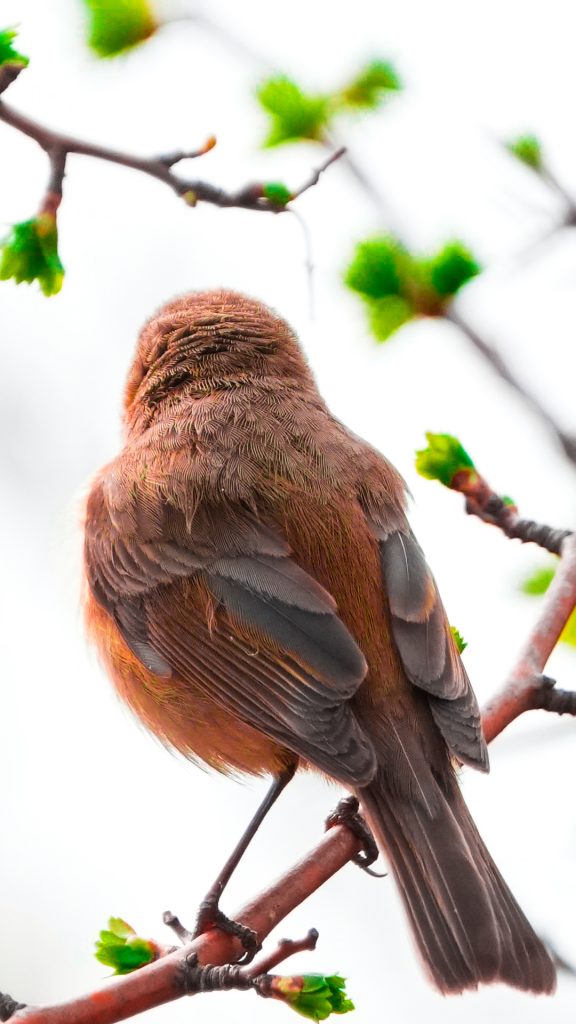European robin in Klagshamn – There’s a rhythm to spring mornings in southern Sweden that always calls me outside before the coffee’s even brewed. In Klagshamn, where the Baltic breeze stirs the hedgerows and whispers through the trees, I spotted a quiet figure among the budding branches: a young or possibly female European robin, resting in the hush of dawn.
The European Robin, A Quiet Presence in the Garden
Not every bird announces itself with flair. Some simply are. This little European robin sat almost motionless, feathers fluffed against the lingering chill, its plumage a soft tapestry of rust, brown, and charcoal grey. No blazing red breast — not yet — but still unmistakable in silhouette and spirit. As the European robin settled, it brought tranquillity to the garden.
Robins are some of the most beloved birds in Scandinavian gardens, their gentle presence often the first sign that winter is loosening its grip. And here in Klagshamn, with only the faintest buzz of distant city life, this one felt like a living poem.
It didn’t sing. It didn’t flutter. It just watched — the world, the wind, and perhaps me.

The European Robin – A Symbol of Seasonal Shift
The European robin (Erithacus rubecula) is more than just a pretty bird. It’s deeply woven into folklore across Europe, often seen as a symbol of renewal, protection, and even the soul’s return. In Sweden, robins are both rural and urban companions — adaptable, inquisitive, and oddly comfortable near people, especially in early spring when territories are still forming. Seeing a European robin in early spring truly signifies the seasonal change.
This one, possibly a juvenile from last summer or a female with more muted tones, was doing exactly what robins do best: keeping watch, blending in, and holding space between seasons.
Its posture felt like a question. A pause. As if asking: Are you ready to begin again?
Photographer’s View
📍Location: Klagshamn, southern Sweden — a residential garden just on the edge of wetland and coast, where urban life meets wild spaces.
📷 Camera: Sony A7R V with FE 200–600mm G OSS lens
⚙️ Settings: ISO 640 | 1/1000s | f/6.3
This was handheld, taken in the soft overcast light of a Scandinavian spring morning. The sky acted as a giant natural diffuser, letting the subtle hues of the robin’s feathers emerge clean and crisp. I kept the shutter fast to freeze even the tiniest movement in its perch — birds can be deceptively fidgety, even when they appear calm. Capturing the European robin in this light highlighted its delicate colours.
The lens let me stay respectfully distant while still capturing detail in those layered feathers. Look closely at the back and you’ll see the gentle gradation of chestnut and graphite, beautifully complex in its restraint.
Reflections from the Branch
I find robins endlessly humbling. They’re not rare, not difficult to spot, and yet they hold a presence that lingers long after they’ve flown. In Klagshamn, surrounded by wind-brushed trees and the sound of distant waves, this robin reminded me that spring isn’t a shout. Sometimes, it’s a whisper — one you have to be still enough to hear. The European robin made me truly appreciate these subtler moments of nature.
In our frantic world, what a gift that is.
Call to the Flock
Have you spotted your first European robin this season? Is there a particular bird that tells you spring has truly arrived where you are? I’d love to hear your own feathered moments — share your stories in the comments, or tag me in your sightings.
Until then, may your mornings be filled with birdsong and branches full of promise.

Leave a Reply